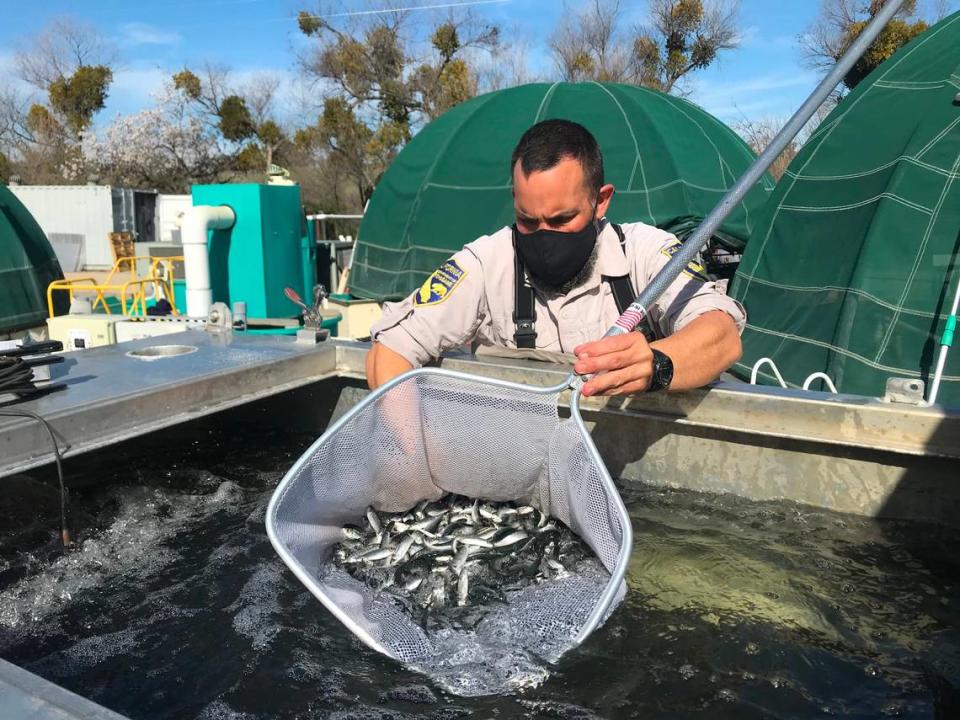Flood releases from Friant Dam ‘a blessing’ for San Joaquin River salmon restoration | Opinion
Prolonged flood releases into the San Joaquin River from the Friant Dam aren’t necessarily great news for farmers whose fields are underwater. Nor for residents of cities and communities along the river.
But for spring run Chinook salmon being reintroduced into the river system following a 60-year absence, conditions are practically ideal.
“It is a huge blessing, not only for San Joaquin salmon but all over the Central Valley,” said Don Portz, program manager for the San Joaquin River Restoration Program. “These are the years when salmon do really well.”
Over the last few weeks, biologists and technicians involved in the multiagency effort released about 200,000 juvenile salmon raised at the interim hatchery below Friant Dam. In a typical year, to circumvent impasses in the river, that process involves trucking them 1½ hours away.
This year, with dam operators maximizing river discharges to make room in Millerton Lake for the record-setting southern Sierra snowpack, those impasses are little more than speedbumps. No need for trucks. The juvenile salmon set out straight from the hatchery.
Opinion
“There’s so much water that even if there are impediments underneath those fish are just going right over the top,” Portz said. “Nothing is going to stand in their way all the way out to the Pacific Ocean.”
In its January initial allocation, the Bureau of Reclamation projected salmon restoration flows of 560 cubic feet per second in March, 600 cfs in April, 640 cfs in May for a total 2023 water year allocation of 556,542 acre-feet. But after repeated atmospheric rivers slammed California, actual flood releases from the dam were raised to 2,000 cfs on March 10 before climbing above 8,000 cfs during the last two weeks. That equated to 328,075 acre-feet in March alone.
High, turbid flows create more feeding habitat for the baby salmon during their journey to the ocean. They’re also able to camouflage themselves in the murky water and better avoid predators.

Adult salmon swimming upstream
As juvenile salmon are pushed downstream on the San Joaquin, adult salmon are starting to make their way upriver at the end of their 2- and 3-year life cycles.
Since those fish were released during drought conditions, their odds of survival aren’t as good as recently released juveniles. But adult salmon that do return should be able to reach their spawning grounds unimpeded.

 Yahoo Autos
Yahoo Autos 